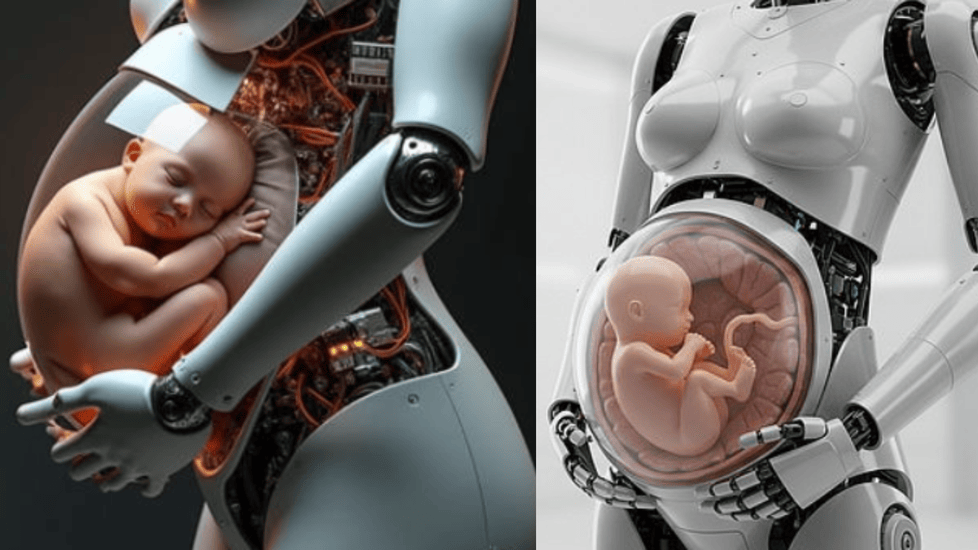China Develops First-Ever Pregnancy Robot—Could It Replace Human Surrogates?

-
China is developing the world’s first pregnancy robot, designed to carry a baby from conception to birth using an artificial womb.
-
Critics call the technology unnatural, raising concerns about ethics, maternal connection, and long-term health risks.
-
Supporters see potential benefits for infertile couples and say it could reduce the physical toll of pregnancy.

China is developing a world-first pregnancy robot capable of carrying a baby to term and giving birth—an innovation that could reshape reproductive health, infertility treatment, and ethical debates around motherhood.
A Step Beyond Incubation
The pregnancy humanoid is being developed by Kaiwa Technology, led by Dr. Zhang Qifeng, who is also affiliated with Nanyang Technological University. His vision for a robotic surrogate capable of full-term pregnancy was unveiled at the 2025 World Robot Conference in Beijing, according to reporting from ECNS.
Unlike traditional incubators, this robot is designed to replicate the entire process of pregnancy—from conception to childbirth.
Key features of the prototype include:
-
An artificial womb implanted in the humanoid’s abdomen
-
A nutrient-delivery system connected through a hose
-
A lifelike interface that allows interaction with the pregnant robot
A prototype is expected as early as next year, with a target price of 100,000 yuan (about $14,000 USD).
“Artificial womb technology is already in a mature stage,” Dr. Zhang told Chinese media. “Now it needs to be implanted in the robot’s abdomen so that a real person and the robot can interact to achieve pregnancy.”
Surrogacy Workaround?
Surrogacy is prohibited in China, but Zhang believes robotic pregnancy could offer a legal alternative. The idea of using a machine to bypass laws banning traditional surrogacy has added another layer to the ongoing debate.
“Pregnancy is an extremely complex process, with each step being extremely delicate and critical,” said Yi Fuxian, an obstetrician at the University of Wisconsin–Madison.
When speaking with Newsweek, Yi warned that the robot might be more spectacle than science.
He called the robot “likely just a gimmick,” adding that even if it could bring a child to term, it comes with “many health and ethical risks.”
Yi also pointed out that successful artificial gestation in animals like sheep doesn't guarantee human success.
“Many health risks emerge at different ages—not to mention mental health issues,” he said.
Ethical and Legal Questions Still Unanswered
Kaiwa Technology says it has begun working with government authorities in Guangdong Province to address legal and ethical considerations. But questions remain about:
-
How fertilization would occur
-
Where donor eggs would be sourced
-
Who holds responsibility for the gestation process
No official guidelines or policies have been publicly shared.
Divided Opinions Across Social Media
News of the robot’s development has sparked heated debate on Chinese social media, with reactions ranging from enthusiasm to outrage.
Critics raised concerns about:
-
The ethical implications of detaching fetal development from a human mother
-
The absence of maternal bonding
-
The commodification of reproduction
Supporters, however, highlighted:
-
Relief from physical strain for women
-
Hope for infertile couples
-
Broader access to parenthood
One commenter wrote, “Many families pay significant expenses for artificial insemination only to fail, so the development of the pregnancy robot contributes to society.”
The Science Isn’t Entirely New
Researchers have already made progress in artificial womb technology. In 2017, a team in Philadelphia previously developed a “biobag”—a device that acts like an incubator, allowing premature lambs to grow in an environment similar to the womb.
The biobag provided oxygen, nutrients, and amniotic fluid. After 28 days, the lambs had put on weight and even grown wool.
While the biobag supports development during later stages, the pregnancy robot aims to take that concept further—supporting fetal growth from conception to full-term delivery.
Cultural and Historical Concerns
Artificial wombs have long been a source of controversy. Since the 1970s, feminist activists like Andrea Dworkin have raised concerns about removing reproduction from women’s bodies and what that could mean for gender equality.
More recently, researchers at The Children’s Hospital of Philadelphia noted that such technology could have broader social impacts:
“A concern is that it could lead to the devaluation or even pathologizing of pregnancy, and may diminish women's experience of deriving meaning, empowerment, and self–fulfillment from this unique aspect of female biology.”
Why China Is Leading This Innovation
China is facing a rising infertility crisis, with rates climbing from 11.9% in 2007 to 18% in 2020. In response, some local governments have expanded insurance coverage for fertility treatments like IVF and artificial insemination.
Developing a robot surrogate may be part of broader national efforts to combat low birth rates and make reproduction more accessible.
🤔Nurses, share your thoughts in the discussion forum below!
If you have a nursing news story that deserves to be heard, we want to amplify it to our massive community of millions of nurses! Get your story in front of Nurse.org Editors now - click here to fill out our quick submission form today!




